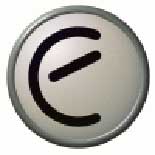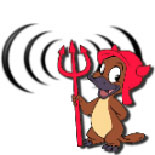
This time we turn to Ethereal, ‘sniffing the glue that holds the
Internet together’. Here is the description they give : “Ethereal is a
free network protocol analyzer for Unix and Windows. It allows you to
examine data from a live network or from a capture file on disk. You can
interactively browse the capture data, viewing summary and detail
information for each packet. Ethereal has several powerful features,
including a rich display filter language and the ability to view the
reconstructed stream of a TCP session”. Whereas OSX is not included it
is possible to get Ethereal running under OSX but it
requires some work. To begin you need to have the XTools
installed (the extra CD shipped with 10.3) (btw. you probably needed
already the XTools to get Kismet up and running). Secondly, you
need to have X11 in Applications/Utilities. This is not a
standard option if you install 10.3 but with a custom install you can
install X11. If you haven’t done this, no problem, you can download X11
from the apple-site (43Mb! download). And finally you need
to have Fink installed (see a previous
post). If you are set, open the Terminal and type
sudo fink install ethereal-ssl
Fink will tell you that it needs some additional packages to
install (12 in my case) and you agree to this with typing Y. Get
yourself a coffee and a book or newspaper because the compilation
process takes quite a while (in my case it took over one hour!). When it
finally stops you hope to be done, so start up X11 and type
sudo /sw/bin/ethereal
and it
works! If you want to begin sniffing you have to click on
Capture/Start and a pop-up window appears. Specify en1 as
Interface and click on Ok. If after some time you press
Stop all the captured packages appear in the main window and you
can start playing. We will see another time what exactly you can do with
all this information…
The previous time that I
tried to install Ethereal (on an iBook) I got an error message :
dyld: /sw/bin/ethereal can’t open library: /sw/lib/libdl.0.dylib (No
such file or directory, errno = 2). Fortunately a simple Google gave
me the following work-around. So if you get into problems that will
probably solve them. I also needed to type xhost in X11 to
allow su to use my window. But, none of these problems appeared right
now so maybe they updated the package.
Moreover,
Ethereal is very well documented both with an online manual-page and a User’s guide (which you can also download as
PDF-file : 454 pages! but only the first 100 or so are worth
printing).

 Okay,
Okay,